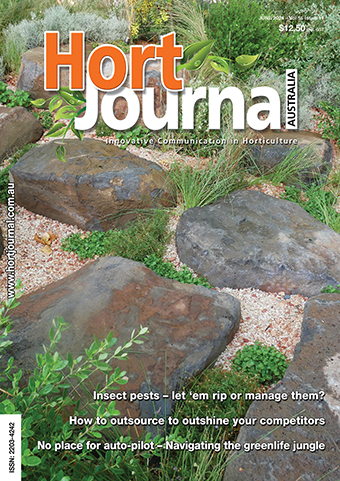Adapting to change
Climate change is a concern for most people and those concerns may impact on our industry. Consumers drive change; as awareness of environmental issues grow so does their desire for more sustainable gardens and landscapes. The demand for native and drought-tolerant plants is on the rise, as they are well adapted to local climate conditions and often require less water and maintenance. Native plant growers may see an increase in demand for their products.
There is also an upward trend towards verge gardening and community gardens. People are claiming unused urban spaces for both aesthetic value, growing food and encouraging engagement with their community. At the same time, verge gardens create habitats for wildlife and pollinators, and also provide ecological benefits by reducing stormwater runoff.
Consumers are keen to reduce their carbon footprints and increase their food security by growing their own. I see some retailers have grow and swap days where customers can bring their home-grown veggies in and swap with others who have grown different types of fruit or vegetables. People are keen for fresh, locally grown produce. With the cost of living on the rise, growing your own is a very attractive option –just like when the pandemic hit and people were growing their own for the first time in their life.
Eco-friendly and biodegradable products are sought after, organic fertilisers and sustainable (asbestos-free) mulches are popular, and it seems people are willing to pay extra for these products.
Climate-aware customers will look for nurseries that are environmentally friendly and employing sustainable practices such as using water wisely, and offering pot and label recycling services.
Growers, too, have adapted to these demands by embracing technology and sustainable practices. They invest in research and development to breed climate-resilient plants. We have recently covered some of this research in our Plant Palette section of Hort Journal, such as plants that cope with both drought and floods.
The humble lawn area is even under threat with many new houses opting for a more sustainable option. It would seem, from a report that I read, that even the ‘low maintenance’ fake grass is not as desirable due to the feel of plastic underfoot and high surface temperatures that are not ideal on a warming planet. Issues regarding its recycling, as well as the fact there is no carbon benefit, are taken into consideration. On the other hand, real turf for the home gardener is seen as a high maintenance option (people have so many other options for spending their days off), and the use of chemicals to keep pests and diseases away are not for the environmentally conscious.
Anyhow, we all have to adapt to a changing climate and a changing budget: The wheel keeps turning and so do we.
As I write this editorial, I am about to head off to the IPPS conference in Ballina, NSW, and the Therapeutic Landscape Conference has just concluded in Noosa, Queensland. Gabe is about to attend the Landscape Expo in Victoria so we should have coverage of those events in the next issue.
Enjoy the read
Karen Smith and your Hort Journal team.

